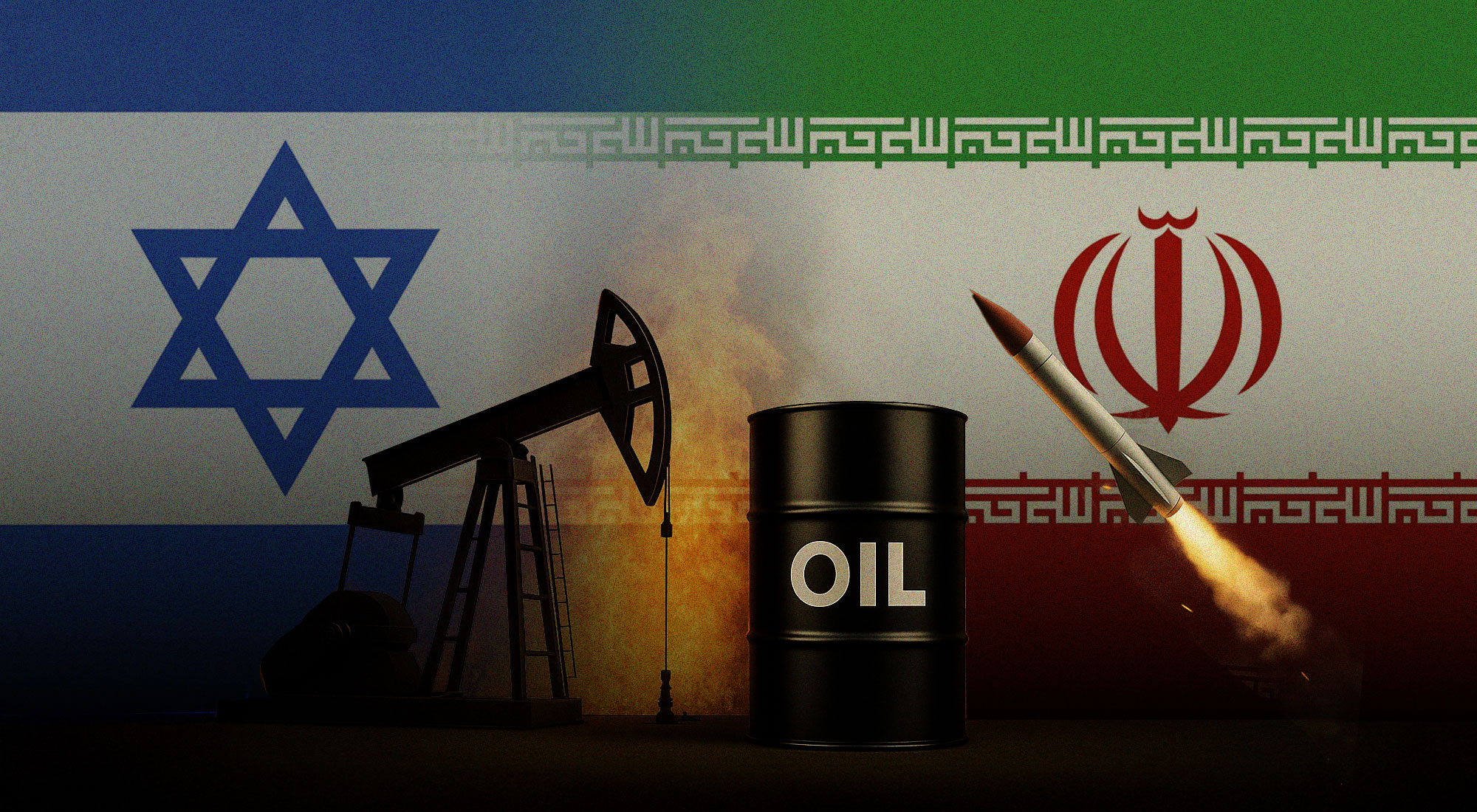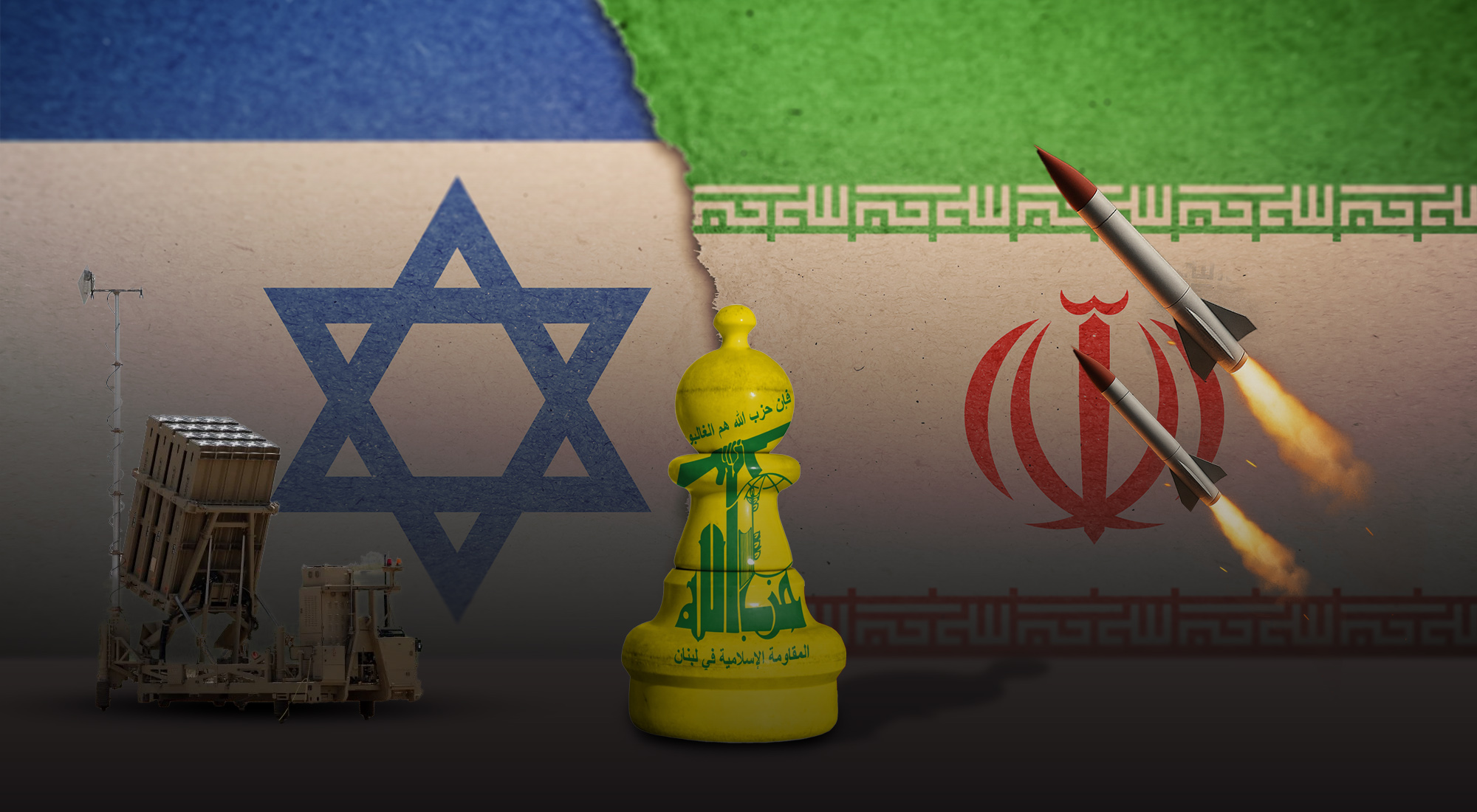The South Caucasus might be entering a new era as the two long-standing enemies, Armenia and Azerbaijan, are on the verge of reaching a major peace agreement. Numerous local and wider Eurasian geopolitical developments push Baku and Yerevan to seek normalization.
While disagreements between the two historical rivals remain, their number and scope have significantly diminished since the fall of Nagorno-Karabakh in September 2023.[1] The Armenian population of the truncated enclave, which fled the region, no longer represents a blocking point in bilateral negotiations between Yerevan and Baku.
Moreover, the recent political moves indicate that tensions between the two neighbors around Armenia’s southernmost province of Syunik have mostly subsided. Baku has become more circumspect in its rhetoric (though, as it will be explained later, some shifts are seen on this front) regarding the so-called Zangezur corridor. Iran and Azerbaijan signed a new railway agreement that would allow transit from Azerbaijan proper to its exclave of Nakhchivan via Iranian territory.[2] This proposed land connection is beneficial to all major actors in the region and would pave the way for the peace agreement between Baku and Yerevan.
Given Yerevan’s growing uneasiness over its alliance with Moscow, it is critical for Armenia to follow through with the peace agreement with Azerbaijan. This will help limit its security dependence on Russia and facilitate the ongoing rapprochement with Türkiye.
So far, as per the statements of Armenian and Azerbaijani officials, the two countries have agreed to recognize each other’s territorial integrity within the borders of what once constituted Armenian and Azerbaijani Soviet Socialist republics. Another area where the two countries’ interests overlap is the opening of transport lines such as roads, railways, and a transit route.
The overall dynamic indicates a major peace treaty may be reached tentatively in the first half of 2024. Yet, it will not be a comprehensive one. Instead, the agreement will be more of a roadmap for future steps aiming at full normalization of relations, a process likely drawn out in months, if not years. This poses numerous questions as to the longevity of the peace process. Indeed, the dynamics on the ground indicate that the militarization of the South Caucasus will only continue.
Armenia’s Calculus
While there might be a genuine belief that peace should finally be reached, Armenia’s stance on the need to sign a peace treaty is also dictated by the difficult geopolitical situation the country has found itself in over the past several years.
The rationale behind Armenia’s approach is clear. In the 2020 Second Nagorno-Karabakh War, Armenia faced a decisive defeat at the hands of Azerbaijan, leading to the return of most Armenia-controlled territories to Azerbaijan. Since then, Armenia’s military vulnerabilities have become increasingly apparent, culminating in the collapse of the Nagorno-Karabakh entity in September 2023 during Azerbaijan’s swift military operation. Consequently, the balance of power has tilted in Baku’s favor.
As a result, Armenia recognized the necessity to bolster its defenses, particularly as relations with its primary security ally, Russia, deteriorated. Tensions escalated after Nikol Pashinyan, the current Armenian Prime Minister, assumed power following a peaceful revolution in 2018. Ties between Yerevan and Moscow have been declining since 2020, with Russia appearing to openly support Azerbaijan.
This shifting balance of power pushed Yerevan to boost its defense expenditure, estimated at US$700-US$800 million. Projections for 2024 suggest a significant increase, potentially reaching around US$1.7 billion.[3]
In addition, Armenia began diversifying its arms procurements, especially given the unreliability of the Russian alliance. Moscow has shown reluctance in supplying military equipment to Armenia, despite Yerevan having paid for it in full. Armenian politicians, including the Prime Minister, have repeatedly raised this issue. This concern is particularly acute, as between 2015 and 2022, nearly 94% of Armenia’s arms imports were sourced exclusively from Russia.[4] The “military procurement” crisis has only been partially resolved in mid-January when Yerevan announced that the long-delayed deliveries are being dispatched to Armenia.
Moreover, Armenia faces challenges with the Moscow-led security grouping called the Collective Security Treaty Organization (CSTO). This has led Yerevan to not only seek alternatives but also to significantly expand its military and security contacts. Thus, diversifying Armenia’s arms imports is directly connected to its diplomatic tensions with Russia.
Recently, Armenia finalized a substantial US$260 million arms deal with India for the Pinaka multiple rocket launcher system.[5] The Indian-made Pinaka system can launch 12 missiles in 44 seconds, covering a range of 60 kilometers, and is 4950 mm in length with a 214 mm caliber.
Armenia is also deepening its military relationship with France. In October, it was announced that Paris had agreed to sell Yerevan air defense systems as well as “Bastion” multi-purpose armored personnel carriers and components from the “ARQUUS” brand.[6] Armenia could also acquire French “Mistral” short-range surface-to-air missiles and three radar systems.
Armenia’s relations with its long-time ally, Russia, have entered a turbulent period, with Yerevan suggesting it might consider exiting the CSTO. While much of this might be a part of testing Russia’s resolve, Armenia has embarked on a multi-vector foreign policy by building close security and defense ties with India, France, and other European countries. This signals a shift in Russia’s position in Armenia and the South Caucasus in general. As the traditionally dominant actor in the region, Russia is now competing with several powers for influence.
The overall trend in bilateral relations indicates that Armenia will not leave CSTO in the foreseeable future, despite all the criticism against the grouping’s ineffectiveness. It is true that CSTO has lost much significance and that Armenia will not lose much in terms of military support if it leaves the alliance, but this membership is still seen as being part of something bigger.
There is little evidence that Armenia’s strong language will turn into concrete action. It is well aware of the economic and security damage it will suffer should it withdraw from CTSO. Although the situation could change over time, current developments indicate that Yerevan will remain within Russia-led multilateral initiatives, including the Eurasian Economic Union (EAEU).
Moreover, shifting trade relations across Eurasia following the war in Ukraine made Armenian economy even more closely linked to Russia’s. The former depends on remittances from Russia which in 2022 reached US$3.6 billion out of US$5.1 billion sent into the country globally. Bilateral trade also reached all time high since the end of the Soviet period, with US$4.16 billion[7] in January-August 2023.
Azerbaijan’s Calculus
It is not only Armenia’s behavior that is being shaped by larger geopolitical trends. Azerbaijan’s strategic considerations are equally clear, though driven less by its current relations with Russia and more by the possibility, however remote, that Armenia might pursue a policy of revanchism in the future.
Azerbaijan maintains a strong military partnership with Israel. According to data from the Stockholm International Peace Research Institute (SIPRI), from 2017 to 2020, over 60% of Azerbaijan’s weapons imports were from Israel, comprising 13% of Israel’s exports during that period.[8] SIPRI’s research also indicates that Azerbaijan’s acquisitions from Israel between 2010 and 2020 include a diverse array of drones, missiles, and mortars.
Investigations by the Israeli media publication “Haaretz” revealed that between 2016 and 2020, there were 92 military cargo flights from Azerbaijan to Israel’s Ovda airport. However, the full extent of the ongoing arms trade between Azerbaijan and Israel is not entirely transparent. Notably, there was an increase in arms trade activities before Azerbaijani military campaigns since 2016. Israeli media reported a rise in flights by an Azerbaijani airline between Baku and Ovda prior to the launch of Baku’s military operation in 2020. Frequent flights were observed between a southern Israeli airbase and an airfield near Nagorno-Karabakh in the weeks preceding Azerbaijan’s 24-hour assault on September 19, 2023.
Despite its military successes and the full reclamation of the lost territories, Azerbaijan continues to prioritize its military expansion. Since 2020, its defense budget has steadily increased, accounting for 16% of the country’s 2023 total budget, at US$3.1 billion.[9] While the alleged Armenian ambitions might be a factor, other reasons also play a role. First, Azerbaijan seeks to maintain a strong regional presence and avoid appearing weak. In addition, Azerbaijan is actively improving relations with Iran yet remains cautious of Iran’s regional intentions, with mutual mistrust still prevalent.
Despite Progress, Roadblocks Remain
Though the prospects of peace between Armenia and Azerbaijan remain strong, there are several contentious issues that complicate the prospects of normalization. For instance, the recent statements from both sides highlighted the complexity of the dealmaking process, involving backtracking on several important questions. In a string of public statements emphasizing the return to the issue of the Zangezur Corridor, Aliyev demanded that cargo, citizens, and motor vehicles, which will travel from Azerbaijan proper to Nakhchivan, pass freely, without any inspection or customs administration. This coincided with the Türkiye announcing that the Zangezur corridor will be completed by the late 2020s, causing anger in Tehran, which nowadays serves as an actor willing to help Armenia retain its sovereign territory.[10]
Later, Azerbaijan rejected maps from the 1970s for border delimitation with Armenia and instead said that the starting point should be either the period of the establishment of the Azerbaijan Democratic Republic or the period of Sovietization.
The Armenians argued that the recent statements coming from Baku represent a serious blow to the peace process and contradict the agreements reached.[11]
This follows earlier statements made by Yerevan that the latest draft agreement which was received from Baku contained changes in the text that endanger the overall peace process.[12] Armenia also argued that the signing of the peace agreement should be linked to a border demarcation mechanism, which Baku rejects.
In a recent interview, Azerbaijan’s President Ilham Aliyev discussed the status of former Soviet Azerbaijani exclaves and villages currently under Armenian control, especially in light of the ongoing border demarcation efforts.[13] These areas, smaller and distant from the long-disputed Nagorno-Karabakh region, have gained attention following Azerbaijan’s reassertion of control over Karabakh. Seven such villages are located in Gazakh district, with four on the Azerbaijani side of the former Soviet border – Baghanis Ayrim, Lower Askipara, Kheyrimli, and Gizilhajili – occupied by Armenian forces in the 1990s. Three others – Upper Askipara, Sofulu, and Barkhudarli – and another exclave, Karki, are unique Soviet-era enclaves. An Armenian exclave, Artsvashen, faced a similar situation.
President Aliyev also stated that the four non-enclave villages should be returned to Azerbaijan unconditionally, while enclave issues require expert group discussions. He emphasized the need for safe access and proper living conditions for enclave residents, expressing confusion over Armenia’s stance.
Additionally, the Azerbaijani President discussed the ongoing border talks, including Azerbaijani troops in areas regarded as Armenian territory, asserting that his army would not withdraw from strategic positions gained since 2020. He emphasized the need for clear border definitions. The resolution of these issues is expected to be discussed in the upcoming commission meeting.
The shifting rhetoric is indicative of the lack of trust between the two sides and the balance of power favoring Baku. Azerbaijan might also be signaling that it no longer fears the collective West’s reaction to the departure of Armenians from Karabakh last September.
It is still, however, unlikely that Azerbaijan will use force to push Armenia to accept the Zangezur corridor. Yet Baku’s calculus is clear: by raising demands it aims at gaining momentum on the diplomatic front. It fits well into Aliyev’s tactics of using a mixture of diplomacy and military deterrence. It has worked so far, and Baku is confident that getting the peace deal it wants is impossible without the right level of pressure.
The South Caucasus: Global Perspective
The near end to the Armenia-Azerbaijan conflict merits discussing the South Caucasus in the context of the wider Middle East. Seen from an Eurasia-wide perspective, the instability in the Middle East – war in Gaza, crisis over shipping in the Red Sea, US’ renewed push to position itself as a central force in the region – impact developments in the South Caucasus.
The region is experiencing significant shifts. The conflict in Ukraine and the resolution of the Nagorno-Karabakh dispute have ushered in a new era for the South Caucasus. Armenia and Azerbaijan are displaying more assertiveness in their foreign policies, striving to reduce reliance on Russia by diversifying their international relations. Azerbaijan is leaning more on Türkiye, strengthening connections with Israel, Central Asia, and various European nations. Armenia, after enduring a difficult phase in its history, is seeking closer ties with the EU, initiating rapprochement with Türkiye, and establishing military links with India and European countries. This marks the beginning of an era characterized by diverse and multifaceted foreign policies.
The rapid diversification marks the end of the post-Soviet era, defined by a binary competition between the West and Russia during the 1990s and early 2000s. The South Caucasus is now a highly contested geopolitical arena, with up to six major players competing for influence, a complexity unseen in the region’s history.
The managed decline of Russian influence, a dominant force since the early 19th century, signifies a major shift. While the Soviet Union’s collapse weakened Moscow’s influence, the South Caucasus remained economically and security-wise dependent on Russia. Historically, however, this Russian dominance is an anomaly in a region influenced through millennia by Middle Eastern powers like the Achaemenids, the Romans (Byzantines), the Sasanians, the Ottomans, the Safavids, and other Iranian dynasties.
The slow but sure retreat of Russian power is rekindling the South Caucasus’s historical ties with the broader Middle East. Geographically speaking, the region is more naturally connected to the Middle East, separated from Russia by the formidable Caucasus Mountains. This renewed connection is evident in growing trade, investments, and infrastructure developments linking the South Caucasus with Türkiye, Iran, and the broader Middle East.
Türkiye, with Azerbaijan as a key ally and strong ties with Georgia; and Armenia, supported by Iran, are pivotal in this transformation. Türkiye is promoting east-west connectivity, as seen in the Baku-Tbilisi-Kars railway and efforts to establish new routes through Armenia. Iran has also made significant strides, such as the agreement with Azerbaijan for a new transit corridor and advancing the International North-South Transport Corridor (INSTC).
The region’s energy infrastructure is increasingly integrating with the Middle East. Azerbaijan has become a major gas supplier to Türkiye, and Iran has expanded its gas trade with Armenia. The growing, albeit silent, competition between Türkiye and Iran in the South Caucasus, coupled with their extensive involvement in the Middle East, has created stronger geopolitical ties between these regions. This connection was highlighted during the Syrian civil war, which saw direct impacts on the South Caucasus, such as the involvement of residents from Georgia’s Pankisi region and Syria’s recognition of the separatist regions of Abkhazia and South Ossetia.
Armenia is also building robust relationships with other Middle Eastern nations, expanding economic and energy links. Azerbaijan’s relations with Israel are particularly notable, with significant military cooperation and Azerbaijan serving as a major oil supplier to Israel.[14] The dynamics between Israel and Iran also influence the South Caucasus.
The end of Russian predominance in the South Caucasus marks a return to the historical norm of Middle Eastern powers influencing the region. The present Armenia-Azerbaijani dynamics are shaped as much by Russia’s declining position as by the growing influence of other actors over the South Caucasus. The age of exclusive domination has come to an end and there are concrete signs that the region has entered a multi-aligned period characterized by multiple powers.
[1] Bassem Mroue, “The fall of an enclave in Azerbaijan stuns the Armenian diaspora, extinguishing a dream,” AP, September 29, 2023, https://apnews.com/article/armenia-azerbaijan-diaspora-beirut-los-angels-nagornokarabakh-dc00e20d1c684877e5b0e67d3de76388.
[2] Ruslan Rehimov, “Baku signs deal with Tehran for transportation lines to van via Iran”, Anadolu, October 10, 2023, https://www.aa.com.tr/en/world/baku-signs-deal-with-tehran-for-transportation-lines-to-nakhchivan-via-iran/3014861#:~:text=BAKU%2C%20Azerbaijan,to%20Nakhchivan%20via%20Iranian%20territory.
[3] Abbas Ganbay, “Armenia sharply increases defence spending”, Azernews, January 23, 2024, https://www.azernews.az/karabakh/220710.html.
[4] Emre Gurkan Aba, “Russia provides 94% of Armenia’s weapons in 5 years”, Anadolu, October 29, 2020, https://www.aa.com.tr/en/europe/russia-provides-94-of-armenia-s-weapons-in-5-years/2023969.
[5] “Armenia–India Relations: From Politics to Arms Trade”, Armenian Weekly, October 5, 2022, https://armenianweekly.com/2022/10/05/armenia-india-relations-from-politics-to-arms-trade/.
[6] “France to supply Armenia with 50 Bastion armored vehicles – media”, TASS, December 4, 2023, https://tass.com/world/1715807.
[7] Arshaluis Mgdesyan, “Russia’s powerful economic levers over Armenia”, Eurasianet, November 1, 2023, https://eurasianet.org/russias-powerful-economic-levers-over-armenia.
[8] Max Saltman, “As Azerbaijan claims final victory in Nagorno Karabakh, arms trade with Israel comes under scrutiny”, CNN, October 4, 2023, https://edition.cnn.com/2023/10/04/middleeast/azerbaijan-israel-weapons-mime-intl/index.html.
[9] “Azerbaijan increasing its military budget”, Arminfo, December 27, 2023, https://arminfo.info/full_news.php?id=81141&lang=3
[10] “Iran Again Highlights Need to Respect Armenia’s Territorial Integrity”, Horizon, January 03, 2024, https://horizonweekly.ca/en/iran-again-highlights-need-to-respect-armenias-territorial-integrity/.
[11] Nane Sahakian, “Yerevan Again Laments ‘Regression’ in Baku’s Stance”, Azatutyun, January 23, 2024, https://www.azatutyun.am/a/32788766.html.
[12] “Latest statements made by Azerbaijan are ‘direct blow’ to peace process – Armenian PM”, January 13, 2024, Armenpress, https://armenpress.am/eng/news/1127976.html.
[13] “Azerbaijani president doubles down on demand for ex-Soviet exclaves’ return”, Eurasianet, January 12, 2024, https://eurasianet.org/azerbaijani-president-doubles-down-on-demand-for-ex-soviet-exclaves-return.
[14] Ariel Cohen, “Israel-Azerbaijan Energy Deal Strengthens Strategic Partnership”, Forbes, November 13, 2023, https://www.forbes.com/sites/arielcohen/2023/11/13/israel-azerbaijan-energy-deal-strengthens-strategic-partnership/?sh=624ffc8364ee.








